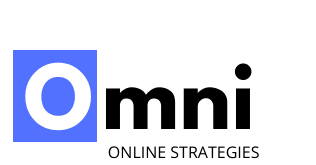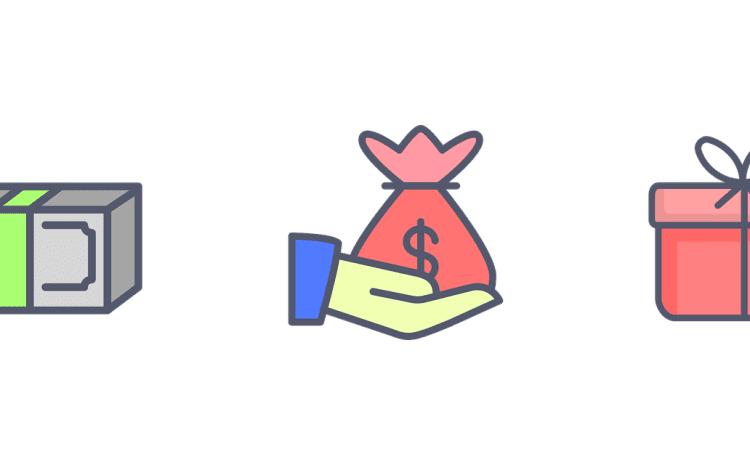The Ultimate Guide to Generate SBA Loan Leads and Close More Deals {2023}
In today’s competitive lending market, it is more important than ever to have a solid lead generation strategy in place. SBA loans are a popular choice for small business owners looking to finance their ventures, making them a lucrative opportunity for lenders. This guide will provide you with the tools and strategies you need to effectively capture leads and close more SBA loan deals.
Table of Content
Understanding Your Target Market
The first step in generating leads and closing more SBA loan deals is to understand your target market. This includes identifying the characteristics of ideal SBA loan applicants, understanding their needs and pain points, and knowing where to find them.
Identifying Characteristics of Ideal SBA Loan Applicants: To effectively target your ideal SBA loan applicants, you need to know what they look like. Consider factors such as:
Size of the business
Industry
Credit score
Annual revenue
Time in business
By understanding these key characteristics, you can create targeted marketing campaigns that speak directly to your target audience.
Understanding Needs and Pain Points: In order to create a compelling lead magnet and build an effective lead generation funnel, it is important to understand the needs and pain points of small business owners. Consider questions like:
What challenges are they facing in their business?
What financing options have they considered in the past?
Why would they choose an SBA loan over other options?
Knowing Where to Find Them: Once you have a clear understanding of your target market, the next step is to find them. Consider the following places to find your ideal SBA loan applicants:
Online directories and listings
Social media networks like LinkedIn and Facebook
Industry events and trade shows
Referrals from current clients
By effectively targeting your ideal SBA loan applicants, you can increase your chances of closing more deals and growing your business. In the next chapter, we will dive into creating a compelling lead magnet to attract your target audience and generate leads.
Creating a Compelling Lead Magnet
In order to effectively capture leads, you need to create a compelling lead magnet that speaks directly to your target market. A lead magnet is a free resource or incentive offered in exchange for a potential customer’s contact information. The goal of a lead magnet is to provide value to your target market while also collecting their information for follow-up and nurturing.
What Makes a Great Lead Magnet:
A great lead magnet should meet the following criteria:
Relevant to your target market: The lead magnet should solve a problem or address a need for your target audience.
Easy to consume: It should be easily digestible and accessible for your target market.
Unique and valuable: The lead magnet should provide unique and valuable information that sets it apart from other offerings in the market.
How to Craft a Lead Magnet: When crafting your lead magnet, consider the following steps:
Identify a problem or need for your target market: What challenges are small business owners facing in their ventures?
Determine how you can help solve that problem or address that need: Can you provide a guide, template, or tool that will help them overcome their challenge?
Make it easy to consume: Offer the lead magnet in a format that is easily accessible and consumable, such as a PDF, video, or webinar.
Examples of Successful Lead Magnets for SBA Lending:
A guide to the SBA loan application process
A checklist of documents required for an SBA loan application
A template for creating a comprehensive business plan
An online calculator to determine the best financing option for a small business
By offering a lead magnet that is relevant, unique, and valuable, you can effectively attract your target market and collect their information for follow-up and nurturing. In the next chapter, we will dive into building your lead generation funnel to maximize your results.
Building a Lead Generation Funnel
Now that you have created a compelling lead magnet, the next step is to build a lead generation funnel to turn leads into paying customers. A lead generation funnel is a series of steps designed to move leads through the sales process and ultimately close a deal.
Components of a Lead Generation Funnel: A typical lead generation funnel consists of the following components:
Landing Page:
A landing page is a standalone web page designed to convert visitors into leads by collecting their contact information in exchange for your lead magnet.Lead Magnet:
The lead magnet is the free resource or incentive offered in exchange for a lead’s contact information.Thank-You Page:
The thank-you page is the page that visitors are directed to after they have submitted their information on the landing page. It should include a confirmation message, access to the lead magnet, and a call-to-action for the next step in the sales process.Follow-Up Sequence:
The follow-up sequence includes a series of emails and/or phone calls designed to nurture leads and move them closer to becoming paying customers.
Building Your Lead Generation Funnel: When building your lead generation funnel, consider the following steps:
Optimize your landing page: Your landing page should be designed to convert visitors into leads. This includes a clear call-to-action, compelling headline, and a form to collect contact information.
Set up a follow-up sequence: The follow-up sequence should be designed to nurture leads and provide valuable information that helps move them closer to becoming paying customers.
Test and refine: Continuously test and refine your lead generation funnel to improve conversion rates and maximize results.
By effectively building and optimizing a lead generation funnel, you can increase your chances of closing more SBA loan deals and growing your business. In the next chapter, we will explore ways to effectively nurture leads and close more deals.
Nurturing Leads and Closing More Deals
Once you have captured leads through your lead generation funnel, the next step is to effectively nurture those leads and close more deals. Lead nurturing is the process of building relationships with leads over time with the goal of turning them into paying customers.
Tips for Effective Lead Nurturing:
Personalize your approach: Personalize your follow-up communications to each lead to build rapport and establish a relationship.
Provide value:
Provide leads with valuable information that helps solve their problems and addresses their needs.Educate and inform: Educate leads about SBA loans and the benefits they can offer to small business owners.
Stay in touch:
Consistently stay in touch with leads through regular follow-up communications, such as emails and phone calls.
Closing More Deals:
To close more deals, consider the following strategies:
Qualify leads:
Qualify leads to determine which ones are most likely to become paying customers.Offer solutions:
Offer tailored solutions to leads based on their specific needs and challenges.Build trust:
Build trust with leads by providing valuable information, addressing their concerns, and demonstrating your expertise.Close the deal:
Close the deal by presenting a compelling offer and addressing any objections.
By effectively nurturing leads and closing more deals, you can grow your SBA lending business and achieve long-term success. In conclusion, capturing leads through a lead generation funnel and nurturing those leads are crucial steps in growing your SBA lending business. Implement these strategies and watch your business grow.
Maximizing Results with Lead Tracking and Analytics
To effectively grow your SBA lending business, it’s important to track your lead generation and nurturing efforts and use the data you gather to make informed decisions. Lead tracking and analytics allow you to measure the success of your lead generation and nurturing efforts, and identify areas for improvement.
Lead Tracking: Lead tracking involves tracking the journey of each lead from initial contact to conversion. This includes tracking the following:
Lead source:
Identifying where each lead came from, such as your website, referral, or advertising.Lead behavior:
Tracking lead behavior, such as page views, clicks, and form submissions, to gain insight into their interests and needs.Lead engagement: Measuring lead engagement, such as open rates and click-through rates, to gauge their level of interest.
Lead Analytics:
Lead analytics involves analyzing data from your lead tracking efforts to gain insights and make data-driven decisions. This includes analyzing the following:
Conversion rates: Measuring the percentage of leads that convert into paying customers.
Lead sources:
Identifying the lead sources that generate the most leads and conversions.Lead behavior: Understanding lead behavior, such as the pages they visit and the information they download, to identify their interests and needs.
Maximizing Results: By tracking your lead generation and nurturing efforts and using lead analytics, you can maximize results and grow your SBA lending business. Consider the following strategies to maximize results:
Continuously test and refine: Continuously test and refine your lead generation and nurturing efforts to improve conversion rates and maximize results.
Focus on high-performing lead sources: Focus your efforts on the lead sources that generate the most leads and conversions.
Tailor your approach: Tailor your lead nurturing approach to the specific interests and needs of each lead.
By tracking and analyzing your lead generation and nurturing efforts, you can gain valuable insights and make data-driven decisions that will help grow your SBA lending business. In conclusion, lead tracking and analytics are crucial tools for maximizing the results of your lead generation and nurturing efforts. Use them wisely, and watch your business grow.
Keeping your leads engaged and entertained
Lead generation and nurturing are crucial steps in growing your SBA lending business, but it’s equally important to keep your leads engaged and interested over time. An engaged lead is more likely to convert into a paying customer, so it’s essential to keep your leads interested in your services and solutions.
Tips for Keeping Leads Engaged:
Offer valuable content: Offer leads valuable content, such as blog posts, whitepapers, and ebooks, that addresses their needs and interests.
Host webinars: Host webinars to educate leads about SBA loans and their benefits, and to demonstrate your expertise.
Connect on social media: Connect with leads on social media platforms, such as LinkedIn, Twitter, and Facebook, to stay top-of-mind and build relationships.
Send newsletters: Send regular newsletters to keep leads informed about industry news, your services, and solutions.
Staying Top-of-Mind: Staying top-of-mind is essential for keeping your leads engaged and interested. Consider the following strategies to stay top-of-mind:
Provide value: Continuously provide leads with valuable information that addresses their needs and interests.
Keep in touch: Regularly keep in touch with leads through follow-up communications, such as emails and phone calls.
Offer special promotions: Offer special promotions and incentives to leads to keep them interested and engaged.
Closing the Deal: Turning Leads into Customers
After effectively generating and nurturing leads, the next step is to close the deal and turn leads into paying customers. This requires a well-planned and executed sales process that focuses on building trust, addressing the needs and concerns of leads, and demonstrating the value of your SBA lending services and solutions.
The Sales Process: The sales process typically involves the following steps:
Qualifying leads: Identifying leads that have the budget, authority, need, and timeline to become paying customers.
Building rapport: Building rapport with leads through effective communication, including active listening and understanding their needs and concerns.
Demonstrating value: Demonstrating the value of your SBA lending services and solutions by addressing the specific needs and interests of each lead.
Overcoming objections: Overcoming objections and addressing the concerns of leads by providing relevant and persuasive information.
Closing the deal: Closing the deal by presenting a clear and compelling proposal that addresses the needs and interests of the lead.
Building Trust:
Building trust is essential to closing the deal and turning leads into customers. Consider the following strategies to build trust:
Demonstrate your expertise: Demonstrate your expertise by providing relevant and valuable information, and by sharing testimonials from satisfied customers.
Be transparent: Be transparent and open about your services and solutions, and avoid making false or misleading claims.
Provide excellent customer service: Provide excellent customer service to leads, and ensure that their needs and concerns are addressed in a timely and professional manner.



